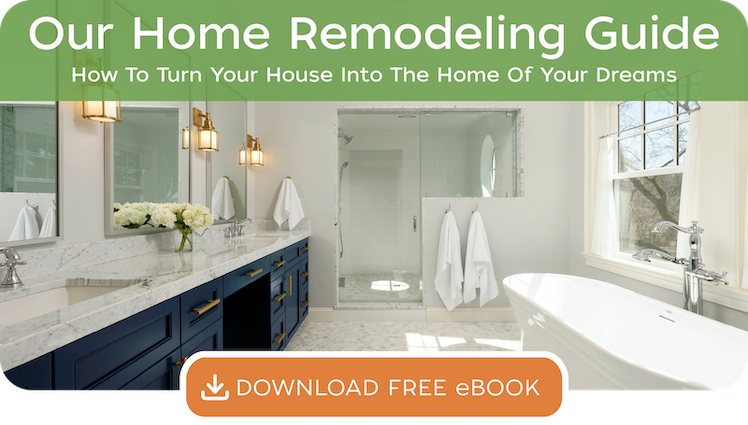An Elevator Can Make Your Home More Convenient, Safe, And Functional
The main function of an elevator is to simplify the task of moving between floors in a home. Whether you need to get heavy bags of groceries from the garage to the kitchen or transport a family member with mobility issues from one floor to another, an elevator can make your home more convenient, safe, and functional.
There are various types of residential elevators, and they each have advantages and disadvantages. Some elevators have requirements that are easier to address when you are designing and building a brand-new custom home, while other styles of elevators are made to be retrofitted into an existing home. Your homebuilder can assist you in determining which type of elevator is best suited for your home, your needs, and your budget.
Photo Courtesy of Area Access Elevators and Stairlifts
1. Shaftless Elevator
With more adults deciding to remain in their homes as they grow older, otherwise known as aging-in-place, the popularity of residential elevators has greatly increased. As mobility issues arise, older adults may need to access different levels of their homes without using stairs. Shaftless elevators offer a simple way of addressing this need since they have a small footprint and can be installed in almost any area of an existing home. They are designed to hold 1 or 2 passengers and serve only 2 levels in a home. Shaftless elevators are well-suited for a retrofit because they move on rails through a hatch in the floor and do not need a full enclosure, a shaft, a pit on the lowest landing, or a separate machine room. For optimal safety, shaftless elevators have sensors that detect obstructions, and they operate by the use of constant pressure on the controls; if the control button is released, the elevator will stop instantly.

Photo Courtesy of Area Access Elevators and Stairlifts
2. Pneumatic or Vacuum Elevator
A pneumatic elevator is a see-through, tube-shaped, vacuum-operated lift. There are 3 sizes of pneumatic elevators on the market: 1 passenger, 2 passenger, and 3 passenger/wheelchair accessible. Since air pressure is used to raise and lower the cab, this type of elevator is more energy efficient than some others, but they can be noisy during operation. At each stop along the elevator's path, the valves and turbines work together to equalize the air pressure, allowing the cab to come to a smooth stop. Pneumatic elevators have back-up batteries and built-in safety features that allow brakes to be activated in the event of a power loss. Pneumatic elevators do not require a pit, shaft, or machine room and will travel up to 50 feet, allowing you to access up to 5 floors in your home. This type of elevator can be installed in an existing home or during new home construction.
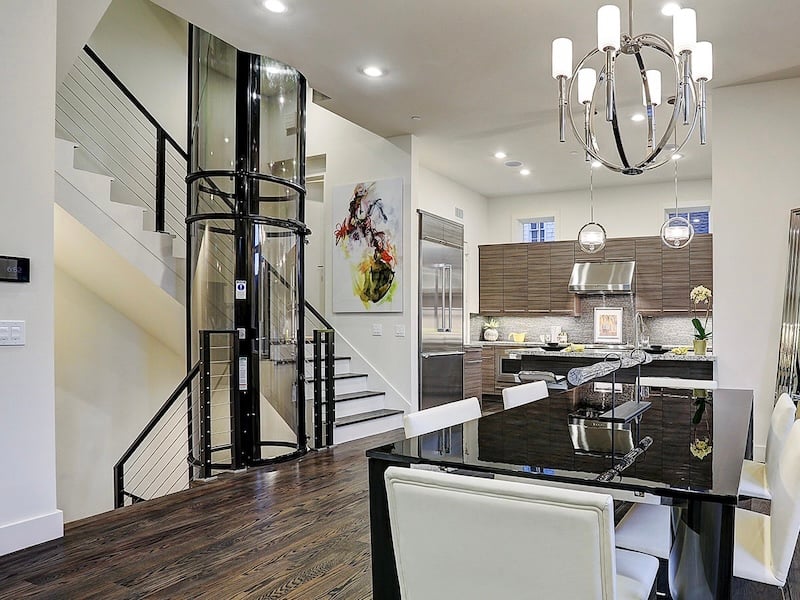
Photo Courtesy of Area Access Elevators and Stairlifts
3. Hydraulic Elevator
Hydraulic elevators offer the quietest and smoothest ride of any type of elevator. They are built to withstand frequent use and are designed to accommodate up to 750 pounds, or the maximum weight permitted by code. The hydraulic system has an electric pump, a piston housed within a cylinder that is connected to the elevator, and a pumping unit that is located in a separate machine room. As pressurized fluid enters the cylinder, it pushes against the piston, causing the elevator to rise. When the car goes downward, the process reverses. Hydraulic elevators can service multiple floors in a home. Since they require a full shaft or enclosure and a pit at the lowest landing, they are best suited for new home construction. This type of elevator can be less expensive to install than some others, but maintenance costs can be high as the hydraulic fluid needs to be changed regularly.
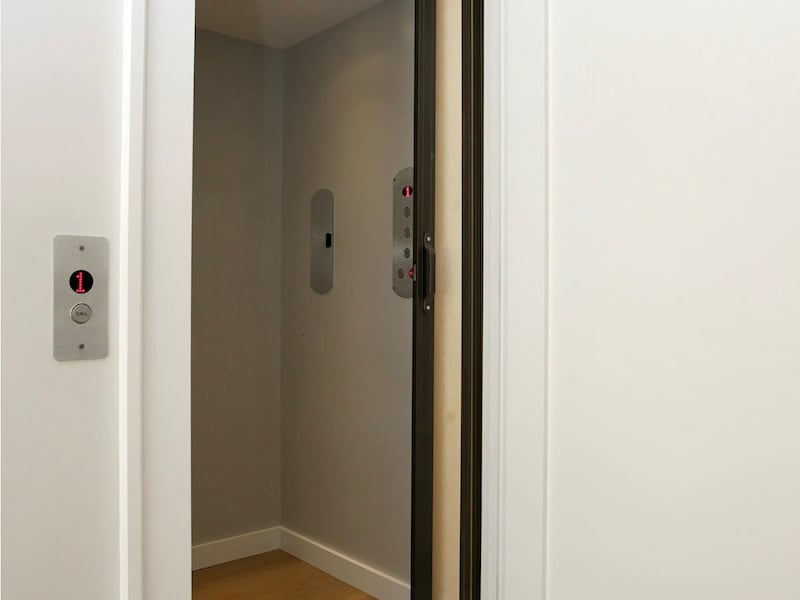
Photo Courtesy of Area Access Elevators and Stairlifts
4. Inline Gear Drive or Machine Room-Less (MRL) Elevator
With a machine room-less (MRL) elevator, the inline gear drive and controller are located at the top of the hoistway or shaft, eliminating the need for a separate machine room. This option can be ideal if you don't have space for a machine room but still want an elevator with a larger cab that offers a smooth, stable ride and can access up to 5 landings. An MRL elevator uses less energy than some other systems and offers many safety features. However, since the motor is attached to the top of the elevator shaft, repairs can be difficult, and it can be slightly noisy when the elevator is operating. Be advised that an MRL elevator should be integrated into the design of a brand-new home because it does require a pit at the lowest landing.
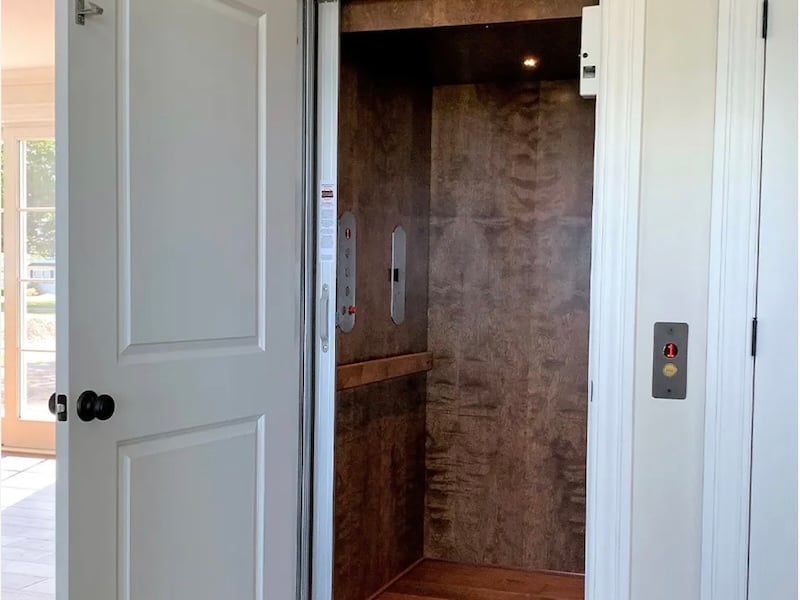
Photo Courtesy of Area Access Elevators and Stairlifts
5. Winding Drum Elevator
A winding drum elevator has an electric motor and a hoisting system that utilizes a series of pulleys and motors to raise and lower the cabin. It can access up to 5 floors in a home but requires a pit, shaft, and machine room, so a winding drum elevator is not ideal for a retrofit in an existing home. The winding drum system may be cheaper to install than some other types of elevators, but over time, maintenance costs can add up if the cables stretch out and need to be replaced. A winding drum elevator may be right for you if initial installation price is an all-important factor, you have the space for a machine room, and you can tolerate some noise and roughness on the ride.
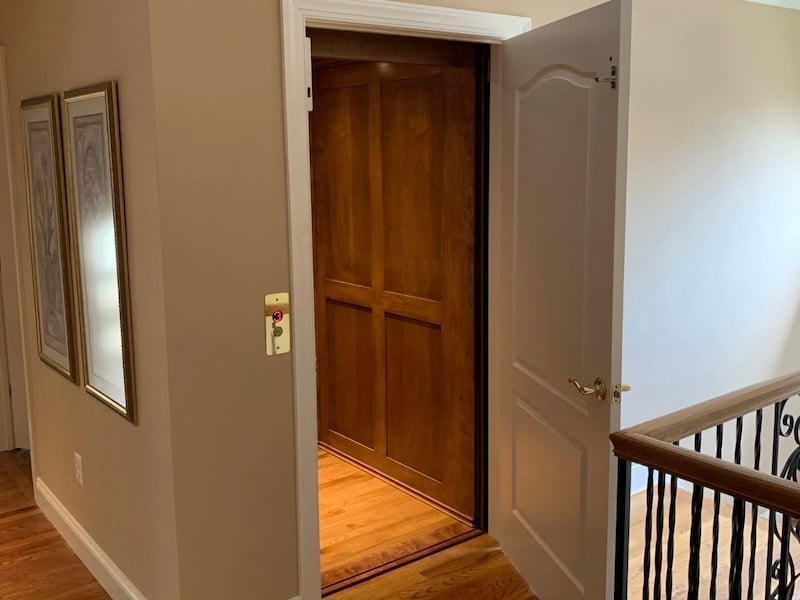
Photo Courtesy of Area Access Elevators and Stairlifts
At Meridian Homes, we specialize in luxury remodeling and custom home building in the Washington, DC area. Our mission is to create exceptional residences that exceed expectations. Our highly personalized design process and careful management of every project have earned us a reputation over many years for outstanding client service and solid, beautiful craftsmanship. Contact us today to begin your custom home or remodeling project.


